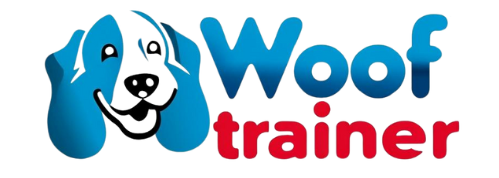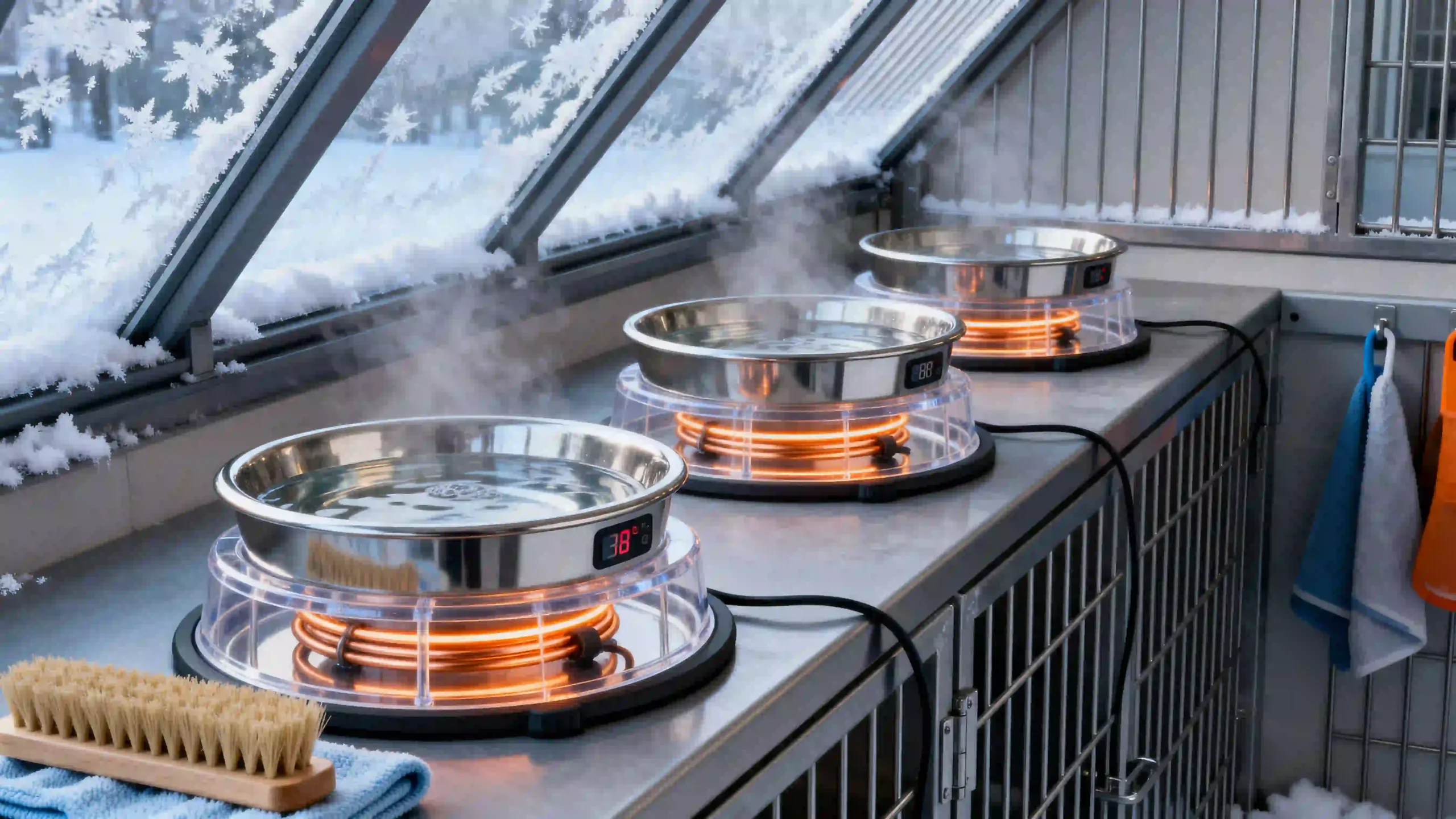For kennel operators and breeders facing long, bitter winters, a kennel heated bowl system isn’t just a luxury—it’s an investment that can trim staff hours, reduce emergency fixes, and streamline winter dog care. When hydration becomes a daily chore, systems designed for efficiency can shift effort from constant maintenance to more strategic tasks. This article analyzes how those systems save labor, what design choices matter, and what metrics you should track.
How Labor Costs Accumulate in Winter Runs
Before improvements, it helps to understand where staff time is most consumed:
- Breaking ice on water bowls multiple times per shift.
- Carrying warm water or replacing frozen bowls.
- Replacing or repairing damaged cords, heaters, or cracked bowls.
- Sanitizing bowls more frequently due to slush, snow, and bacterial buildup.
- Checking all runs multiple times per day for hydration issues.
These repeated tasks add up, especially in cold regions where freeze-ups are frequent. Having a well-designed kennel heated bowl system reduces many of those recurring disruptions.
Design Features That Drive Labor Savings
To save labor, certain features of heated bowl systems matter deeply:
| Feature | Labor Savings Impact |
|---|---|
| Large, well-insulated bowls | Freeze less, so fewer manual ice breaks and water replacements. |
| Thermostatic control | Heater kicks in only when needed; avoids wasted effort monitoring units. |
| Heavy-duty, chew-resistant cords and protected wiring | Fewer failures or safety hazards to repair. |
| Stable installation with tip-resistant bases | Less spillage, less cleanup after dogs nudge or play. |
| Easy-clean surfaces (stainless steel or durable certified plastic) | Faster cleaning; less scrubbing; fewer replaced bowls. |
When these features are in place, the system works more automatically—staff become overseers instead of first responders.
Deployment Tactics to Maximize Efficiency
Putting in a good system is part; deploying it well is just as important:
- Strategic placement — Position bowls in sheltered areas (covered runs, barns) to cut wind exposure and snow/dirt buildup. The less exposure you have, the less time staff spend dealing with frost or snow accumulation.
- Uniform models across runs — Using bowls of the same model simplifies maintenance (same spares, cords, procedures), reduces training time, and speeds up repairs.
- Scheduled checks rather than constant watch — When systems are reliable, you can switch from hourly tasks to check-in routines (e.g., morning, midday, evening), freeing up staff for other duties.
- Backup & redundancy — Have spare bowls or alternate water sources so that a failure doesn’t trigger a full shift of emergency work.
- Training protocols — Staff should know safe usage, cleaning, and simple fixes, per safety norms. Reference systems like those in Heavy-Duty Heated Dog Bowls Built for Large Kennels to choose equipment with fewer failure points.
Quantifying Time & Cost Savings
Here are some numbers / case-style insights:
- A kennel with 10 runs switching from standard bowls to good heated bowls with thermostats reported reducing water-check trips by ~50% in bitter weather (−10 to −20 °C).
- Curling ice less often means fewer bowls cracked or cords damaged—savings on replacement parts.
- Reduced labor for emergency interventions: for example, when bowls freeze overnight, staff often lose early morning time. With reliable heated bowl systems, that loss is cut significantly.
Automation via water-level sensors or float valves (common in water automation systems) further reduce staff time spent walking runs just to refill. These systems, when paired with heated bowls, deliver strong ROI.
Comparing Bowls vs Buckets / Integrated Automated Systems
To understand labor savings in context, compare:
- Many smaller heated bowls vs fewer large buckets or tanks: multiple bowls across runs means more frequent checks; buckets hold more but may require more power and careful cleaning. The trade-off is explored in Scaling Hydration: Buckets vs Bowls in Large Kennels.
- Heated bowl only vs full automated systems: bowls reduce ice tasks, but automating refill or water supply adds more savings. However, upfront cost and infrastructure increase.
- Time savings vs initial investment: as in Do Heated Dog Bowls Really Save You Time in Winter, you’ll see initial costs offset in reduced labor, fewer replacement parts, and fewer emergency tasks.
Best Practices for Choosing a Labor-Saving System
When selecting a kennel heated bowl system with labor reduction in mind:
- Prioritize models that specify low maintenance features (removable parts, durable exterior, stainless steel).
- Check for warranty and spare-parts supply—labor lost waiting for parts is a hidden cost.
- Use thermostat-based or sensor-controlled heating to minimize energy waste and avoid constant monitoring.
- Evaluate real power draw and insulation: poorly insulated bowls waste energy and increase required heater runtime.
- Ensure safety features are strong: chew-proof cords, proper electrical ratings, stable bases. Unsafe systems lead to costs via injury or replacement.
Case Example
A boarding facility in Vermont (20 dogs in 8 runs) upgraded to commercial heated bowls with thermostats + chew-resistant cords:
- Reduced manual ice removal from approx. 4x/day to 1x/day in many runs.
- Staff saved ~1 hour per day during harsh cold periods.
- Fewer replacement cords/modules—maintenance reduced by ~30%.
They estimated that over a winter season, the cost of upgraded bowls paid for itself in labor savings alone.
FAQ
-
What is a reasonable payback period for investing in a kennel heated bowl system?
In many cases, 1 winter season (3-4 months of cold) is enough, given savings in labor, fewer emergency fixes, and reduced replacement of bowls/cords. -
Do these systems consume much more electricity vs basic unheated bowls?
Not if properly spec’d. Thermostatic systems reduce power use by only activating when temps drop near freezing. Well-insulated bowls and sheltered placement help minimize energy use. -
How many staff hours per week can such systems save?
It depends on kennel size and severity of winters. For a kennel with 10-20 runs, savings of 5-10 staff hours/week in cold periods can be realistic, shifting labor to other tasks. -
Are there hidden costs to heated bowl systems?
Hidden costs include replacement parts, electricity, possible higher upfront purchase, ensuring safe electrical infrastructure. But these are typically outweighed by labor and replacement savings if wisely managed. -
How to monitor and maintain these systems to preserve labor savings?
Use logs for water check counts, track failures, schedule cleaning & inspections, ensure staff know basic troubleshooting. Reactive maintenance eats savings; proactive maintenance preserves them.


